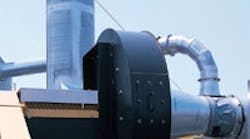On December 19, 2007, President Bush signed the Energy Independence and Security Act (EISA). The bill, which goes into full effect in December 2010, mandates motor efficiencies beyond the minimums of the 1992 Energy Policy Act. Tip for motor buyers: Evaluate if exceeding EISA's efficiency minimum will provide a competitive advantage for motor-driven products.
EISA will keep motor makers busy advising and assisting customers over the next few years. For example Baldor Electric Co.'s current annual report states, "We will be working closely with our customers to make sure they are using the appropriate premium efficient motors as required in the new energy bill."
Randy Breaux, Baldor's vice president of marketing, says many OEMs will be required to upgrade from a standard efficient motor on machinery they produce to a premium efficient motor. His advice to motor buyers: "First determine if even more efficiency could be competitively advantageous for the motor applications." The company's highest efficiency models, the Baldor/Reliance Super-E motors, exceed EISA requirements. Breaux says the Super-E motors, now being prototyped, offer performance efficiency that OEMs could apply to competitive advantage.
Breaux explains that while the upgrade to premium efficient motors required by EISA will raise initial motor cost 10% to 15%, the added efficiency will recover the added cost in six to 12 months. Adds McFarland, "The savings in electricity will then continue year-after-year. And since motors often last 15 to 20 years, the lifecycle savings can be substantial, if the right decision is made up front."
Even greater efficiency gains can be achieved by using adjustable speed drives in certain applications, particularly pumps and fan applications, McFarland notes. "In some cases an adjustable speed drive can reduce power consumption by half." He says running an adjustable speed drive could also enable other efficiencies in the process. He estimates only 5% to 10% of all industrial motors are equipped with adjustable speed drives, and according to the Department of Energy (DOE), as many as 25% could be or should be.



